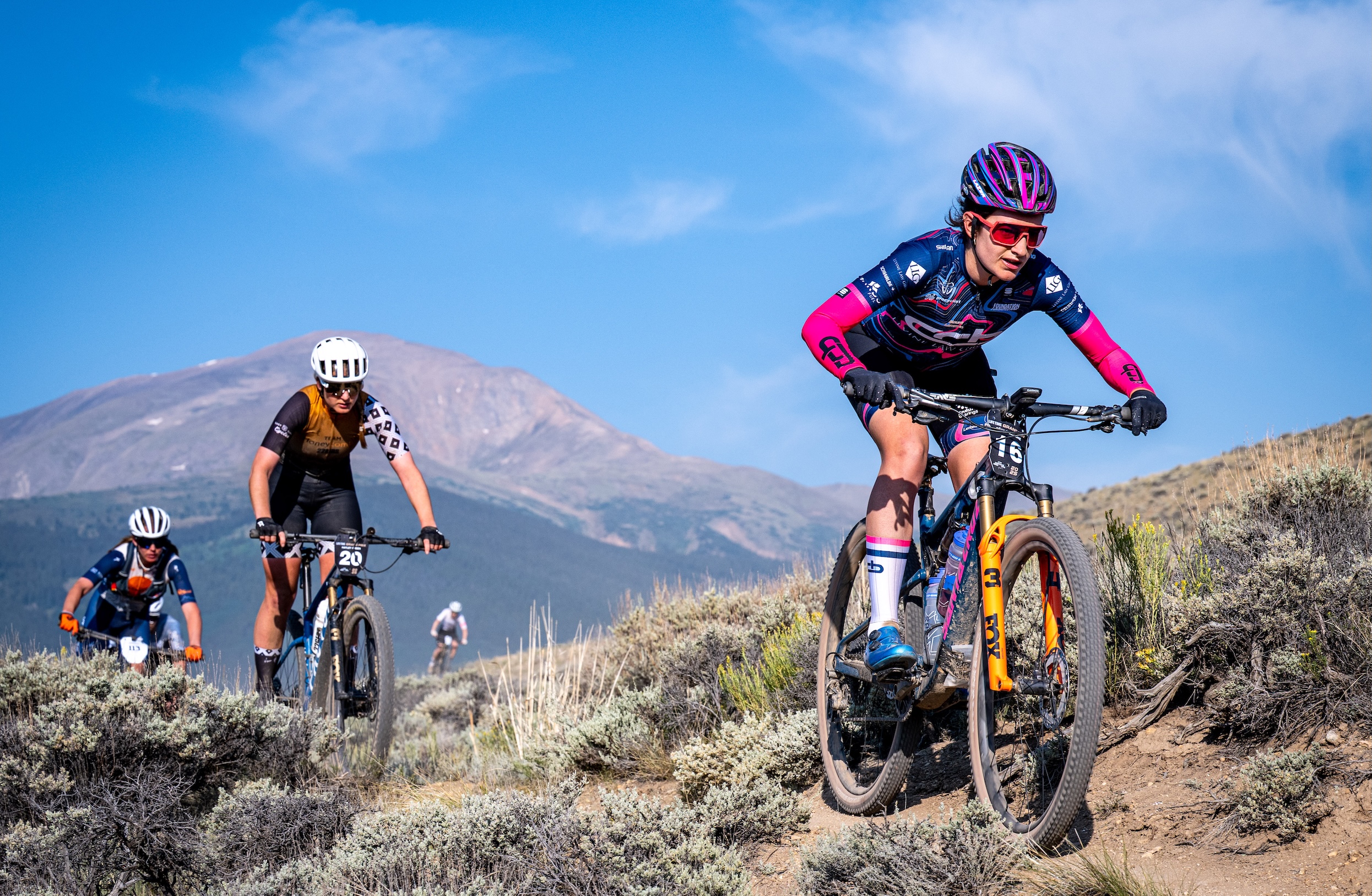Myth: Indoor cycling is only for intervals and training
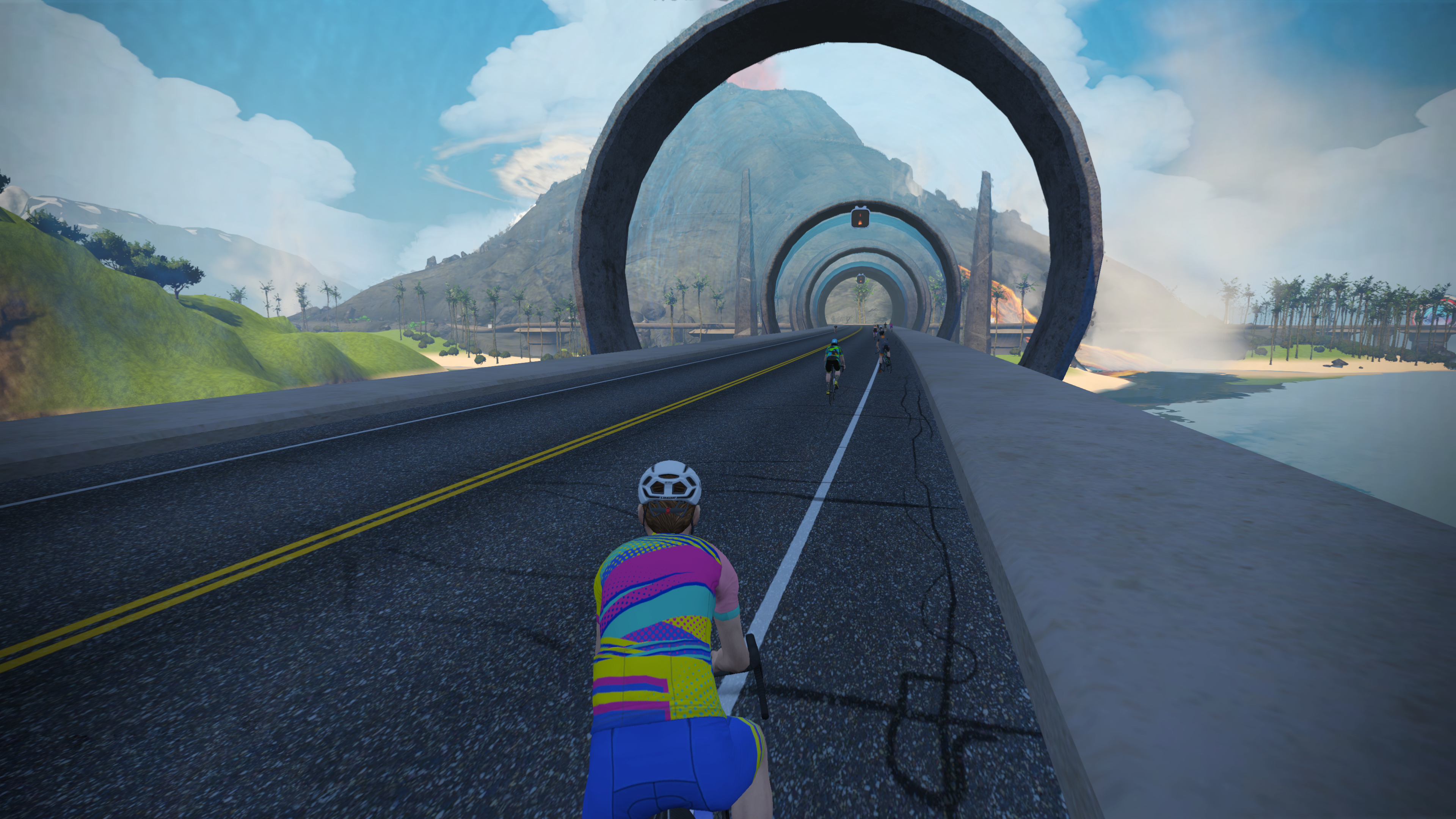
Indoor training has gone through a huge transformation over the last few years. In the not so distant past, indoor training wasn't commonly used as a primary training scenario. Instead, indoor training was more like something to endure when it was impossible to ride outdoors. Periodized training would use winter months as an opportunity to take a break from the bike and recharge. If it was at all possible to ride outside then the advice was to build base miles.
Then, as technology progressed, there started to be a shift. Instead of using indoor training as only something to endure when riding outside was impossible, it started to become a tool for targeted training. Targeted training meant intervals and required an intensity of thought and a purposeful desire to build performance metrics. As this transition took place, one piece remained constant.
Indoor training was a tool for racers looking to get faster. If you want to get faster then the most efficient way to do that is to use interval training. The problem with that scenario is that anyone who wasn't racing, or all that interested in getting faster, found themselves with few options for indoor riding. There's a huge group of people who ride bikes for fun and intervals just aren't that fun. Technology advances though and things have changed again.
As the best smart trainers have gotten more realistic, and options like the Zwift Hub One have made use even easier, the software side of the equation is evolving too. Today there are still tons of options for targeted intervals to make you a faster rider. There are also other options though and specifically, there is Zwift. Zwift is a social ride experience that has options for intervals but focuses on just riding a bike first and foremost. If you always thought indoor riding wasn't for you because you hate intervals, keep reading. I've spent a lot of time exploring how to make riding indoors a lot like riding outdoors and I'll walk you through some of the options.
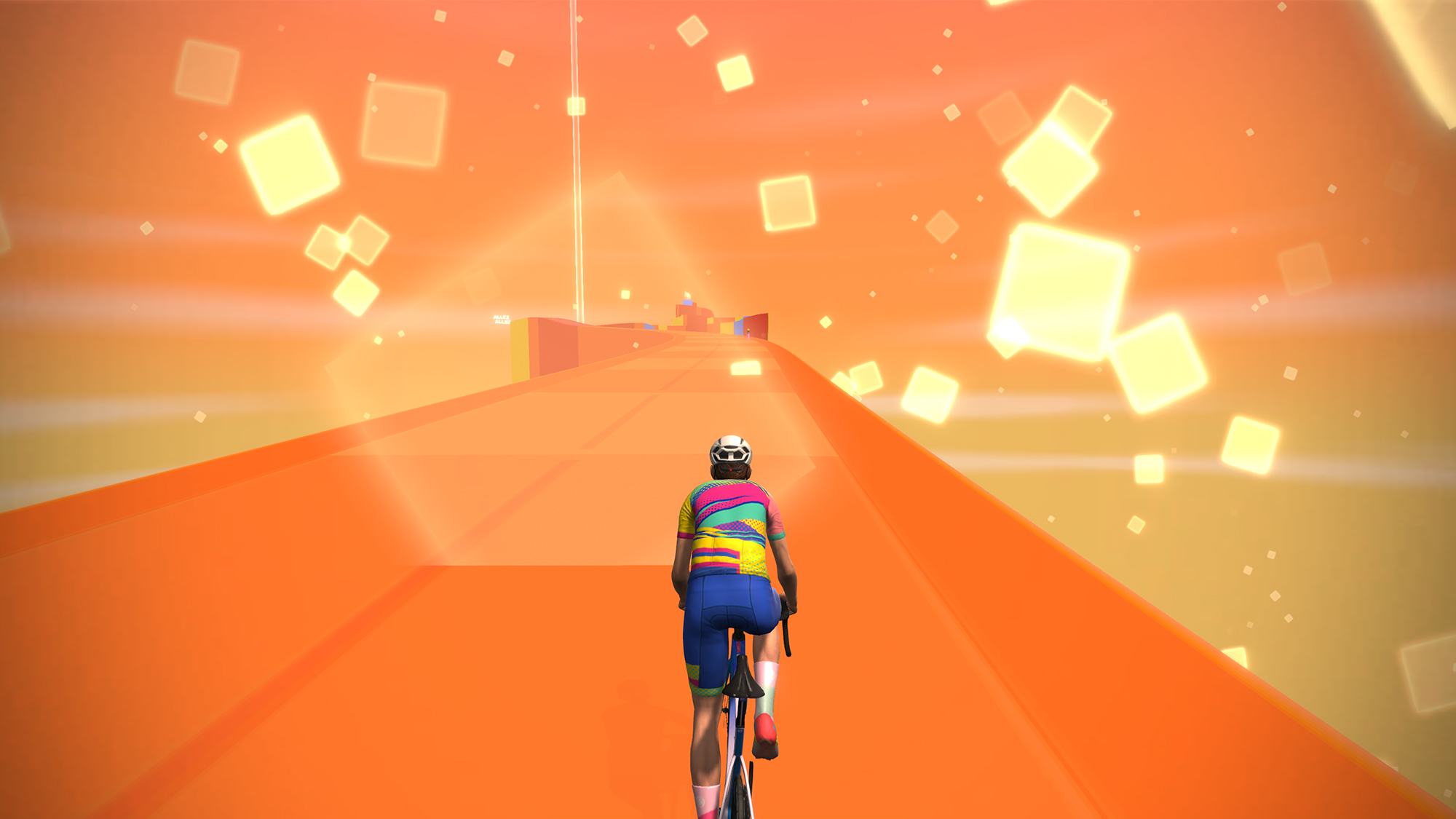
What routes are available?
In today's virtual cycling landscape, Zwift is not the only option available if you just want to ride. What sets Zwift apart is that instead of real locations, Zwift is a collection of virtual worlds. There are actually some virtual routes within Zwift that mimic real world locations, such as the UCI cycling world championships courses in Yorkshire or Glasgow, but even those courses are wholly virtual and go through a process to optimise them for virtual cycling. This does take time but at this point, the options are substantial. It's not impossible to eventually cover every route but, according to my count, there are currently 128 routes spread across 10 different worlds. Zwift is also constantly adding new routes and new options for riding so that will expand going forward.
One of the most recent examples of this, which I haven't counted, is the 16 climbs that are now available within the climb portal. The climb portal is a collection of virtual recreations of real world climbs with simple graphics. The climbs you will find within the portal lack the artistic depth of normal Zwift routes but it's specifically designed to make it easy for continued additions. If you like climbing, this is an amazing option for just riding. Anyone who likes a good hill repeat, instead of an actual interval, will certainly find something to do in the climb portal.
If even that scenario sounds a little too close to intervals, don't worry, that's just a taste of what Zwift offers in terms of free riding. The vast majority of what you will find in Zwift are locations that you interact with as if they are real locations. There are areas with hills and there are areas that are flat. Like real life, the farther you ride the more your route will incorporate both. Also like real life, there are different places to start and most, but not all, locations connect to each other.
At any time, there are three worlds available for selection. The roads within those worlds connect to each other but the worlds do not. It's akin to being able to drive to a variety of places near you to start a ride vs having to take a plane to a new location. Also, there are obviously more than three worlds but they rotate as a guest world with Watopia being the constant that's always available.
Every route available within the 10 worlds currently on Zwift
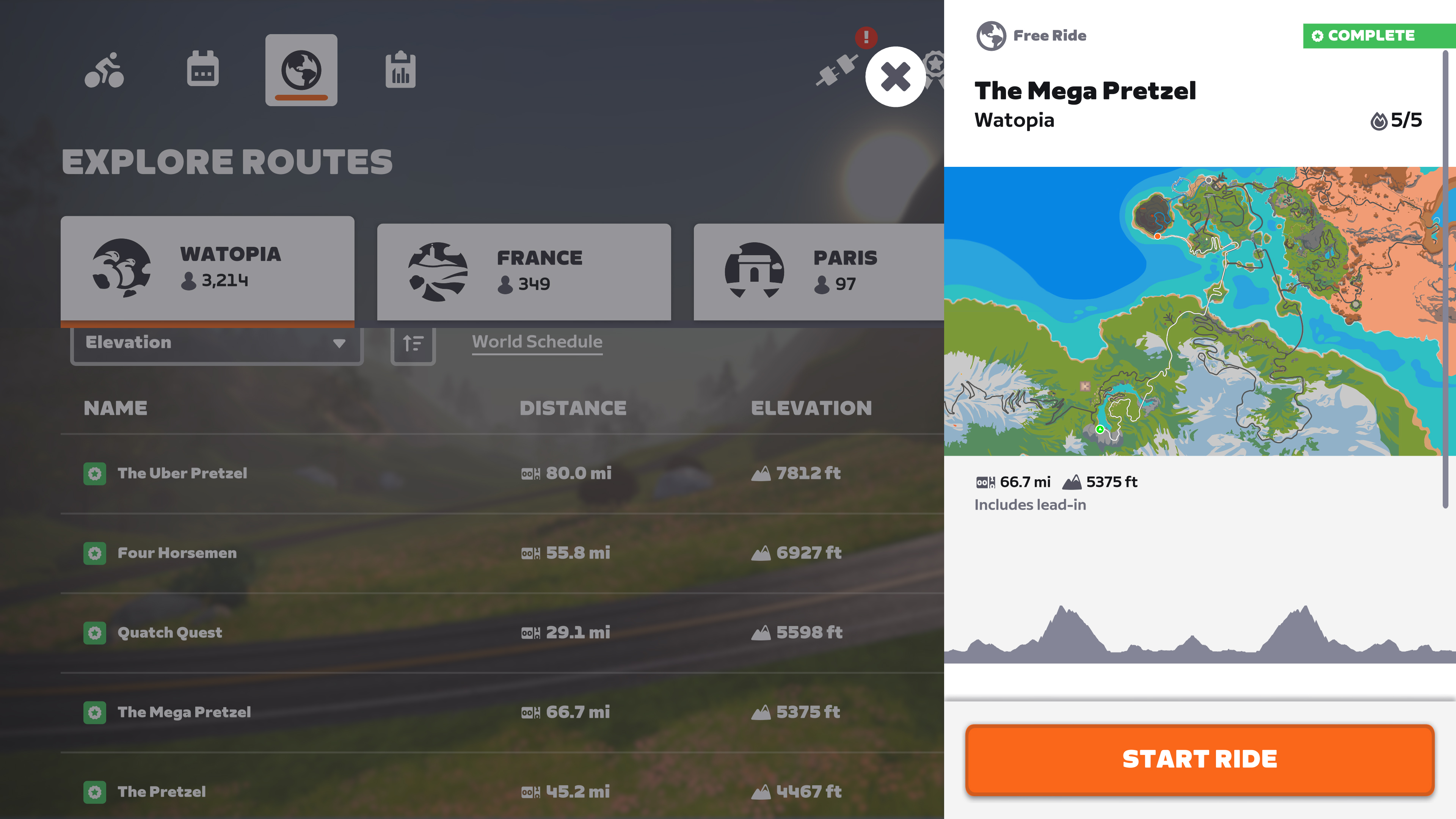
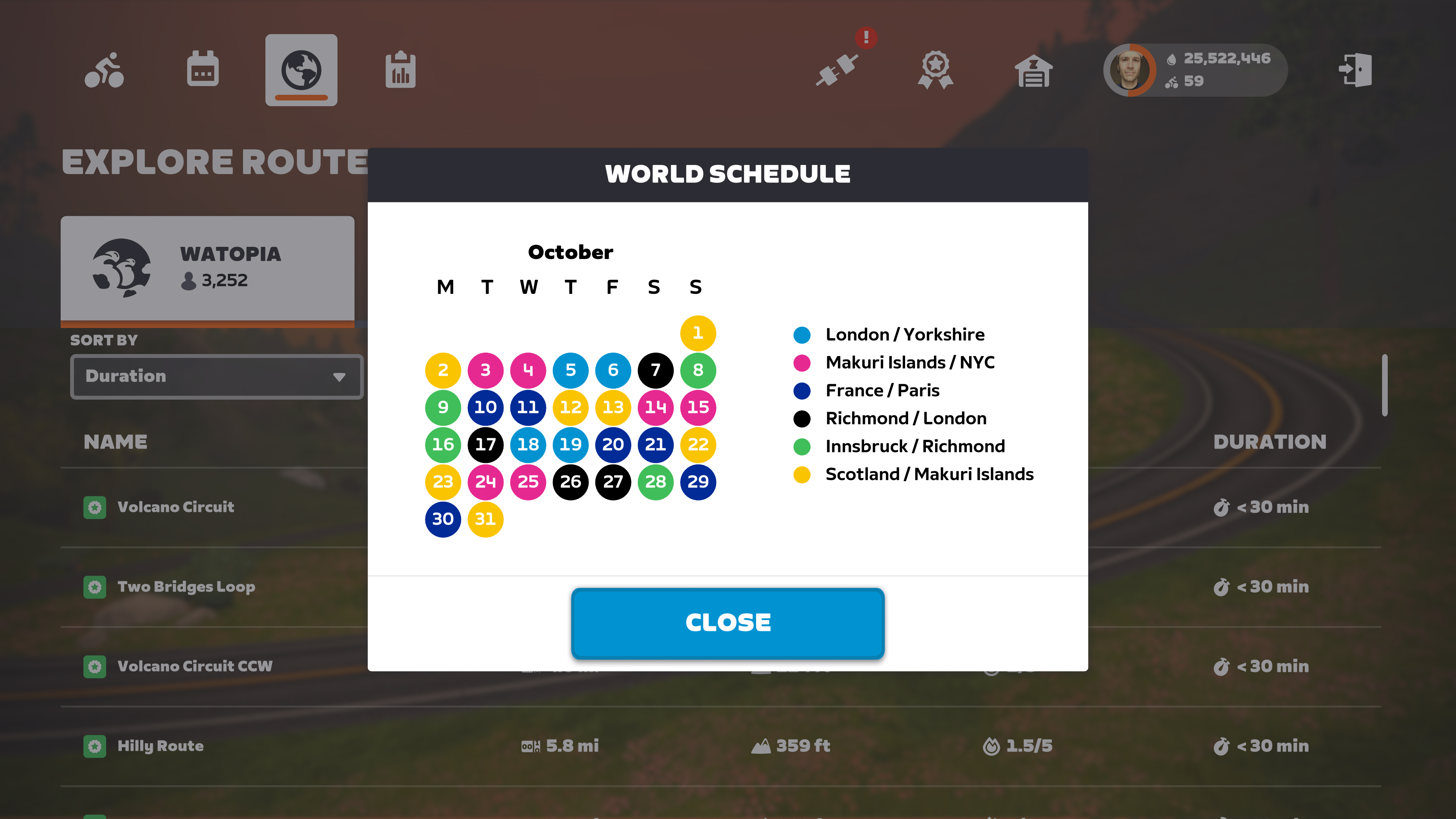
How to get started
Although Zwift has been shifting somewhat more recently, the software relies heavily on the Zwift companion app. Most of the time when you want to find something to do on Zwift, you will want to fire up the companion app on your phone. It's easy to look ahead and find anything social including races, group rides, and group workouts. Free riding is different though.
When you want to ride, and explore, in a way that feels similar to outdoor riding, there's no need to look at the companion app. Fire up Zwift on your chosen device and hit the world icon. Once there, you will see the three worlds available as well as all of the routes within the selected world. There are details about each route and an estimate of how long it will take you. If you select a route another screen will come up and show you a map of the route to give even more info.
When you choose your route to ride, you'll find yourself transported to the start. Start pedalling and you will start moving through the route. As long as you are not participating in an event you will see opportunities to turn as you ride. Each time the roads intersect there will be a pop-up. You are welcome to interact and change the direction you are travelling but you don't have to. If you do nothing, Zwift will keep you on your chosen route for as many laps as you like.
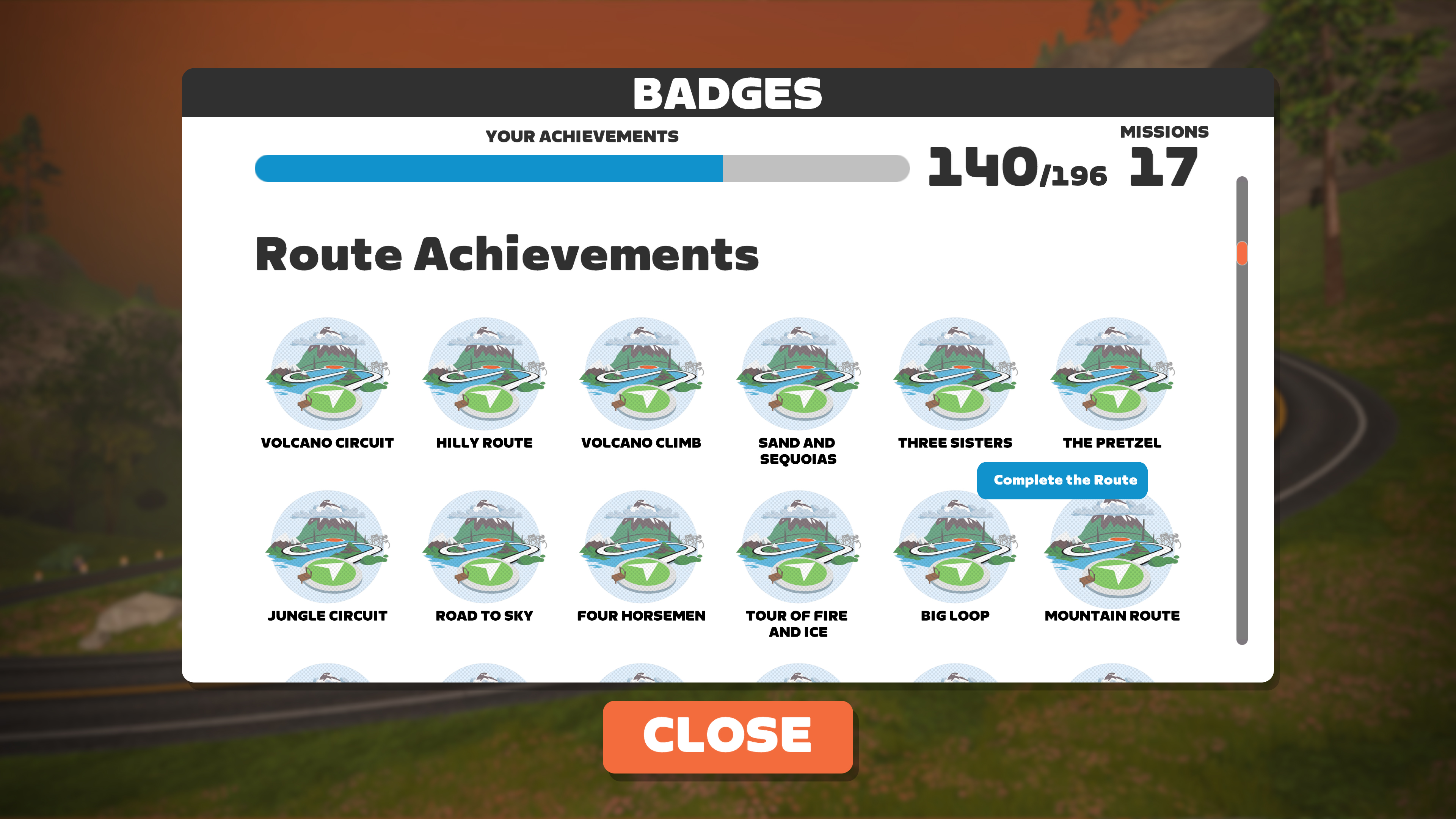
Finding motivation without intervals
One of the most difficult things about indoor riding is finding the reason to do it. We all ride our bikes because we want to. The question is why do we want to? For some, the answer is to go faster and to be competitive. Anyone in that camp tends to have an easy path to finding the motivation to ride inside. If you’d prefer not to do intervals, you need a different kind of motivation. One popular option is the Zwift badge system.
There are badges for things like connecting your Strava account but there are also achievement badges that are great for motivation. Right now there are 196 badges available. Some are for things like distance and, as an example, if you ride for 10 miles you'll get a badge but there are also badges for completing each route. The badges are one of the most time honoured ways to add meaning to free rides.
Some notes about the experience, in order to complete a route you must select it from the route screen and ride it in entirety. That means you can't turn off of a route then come back and finish. You also must complete an entire lap including any lead in. Even if you think you've completed the route, keep riding until you see the notification pop-up and confirm route completion. Once that happens, you will get a bit of extra XP and the badge.
You will also see a green icon to the left of the route name on the route selection screen. It is possible to complete a route during an event but again, you'll need to fully complete the lap. It's also only possible to complete one route per ride. This might come up if you complete a route during an event then try to complete something else once it finishes. That won't work, you will need to end the ride and save it then start a new ride to complete the next route.
It's also worth mentioning that Zwift is very aware of the draw of these route badges. Ride long enough and you will complete all the routes but Zwift is always looking to give you a new reason to ride the same routes again. Things like the recently completed Pretzelfest series award a new kit for riding a selection of routes during a specific time period. Of course, as already mentioned, there are also always new routes to complete. Even if you completed all the routes in the past, it's worth looking to see if there are new routes to complete.
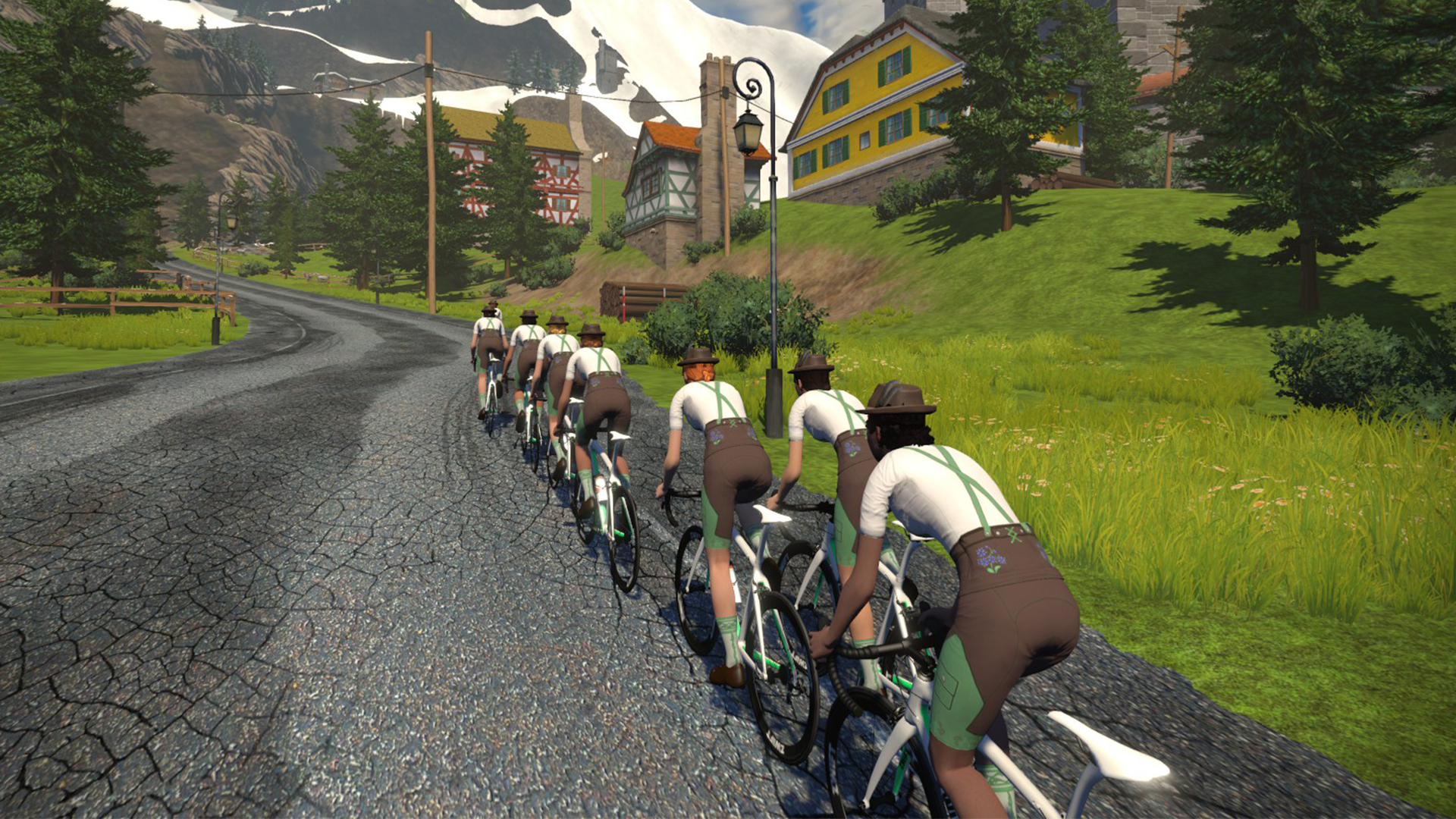
Focus on exploration
When I talk about finding motivation for indoor riding and the route badges, that’s very similar to the idea of focusing on exploration but there’s more to it. Even if you aren’t specifically going after a badge, you need to be careful about how you structure your indoor riding. You’ll want to think about how you ride outdoors and make sure to bring some of that back into your indoor motivation.
The first thing that means is you should never use time as a structure for an indoor ride. When you ride outdoors you might have an idea of the time available, and the distance you can cover in that time, but that's not how you structure your rides. A big part of that is the reality that you have to get home but it's still a reality. When you ride indoors you have the freedom to get off your bike at any time and the ride is over. It makes it convenient but it's also the biggest mental challenge that exists. If you only watch the clock it will sit like a devil on your shoulder and beckon you to stop.
Also, don’t be fooled into thinking you can use distance instead of time. While it's true that distance can be more motivating than time, it's only a marginal improvement. Outdoors it's pretty effective not because of the distance you set but, again, because you have to get home. If you decide to ride 20 miles / 32 km outside you have to complete that distance to get home. When you take away that necessity, you'll start to wonder if 19 miles is good enough. I mean, it's just a few minutes shorter, what's the difference?
When you are riding inside you can stop at any time so you need a reason to keep going. Instead of time or distance, start structuring your rides around the concept of routes. That’s what the route badges are doing but you don’t have to use them. With or without them, the concept works because there's no devil on your shoulder and the route is either done or it's not. At the same time, using a route as your structure reintroduces the concept of exploration.
There are new things to see as you progress through a Zwift route and Zwift can actually be quite beautiful. I don't want to pretend that it's on par with some of the views I've seen on my bike outside but there's no reason to completely discount it. When you've spent 20-30 minutes climbing hard up the Epic KOM and you finally crest the snow covered peak, there's a certain beauty plus there’s a goat. This is particularly true with a nice big 4k screen and maxed out graphics though it's there even on lesser setups.
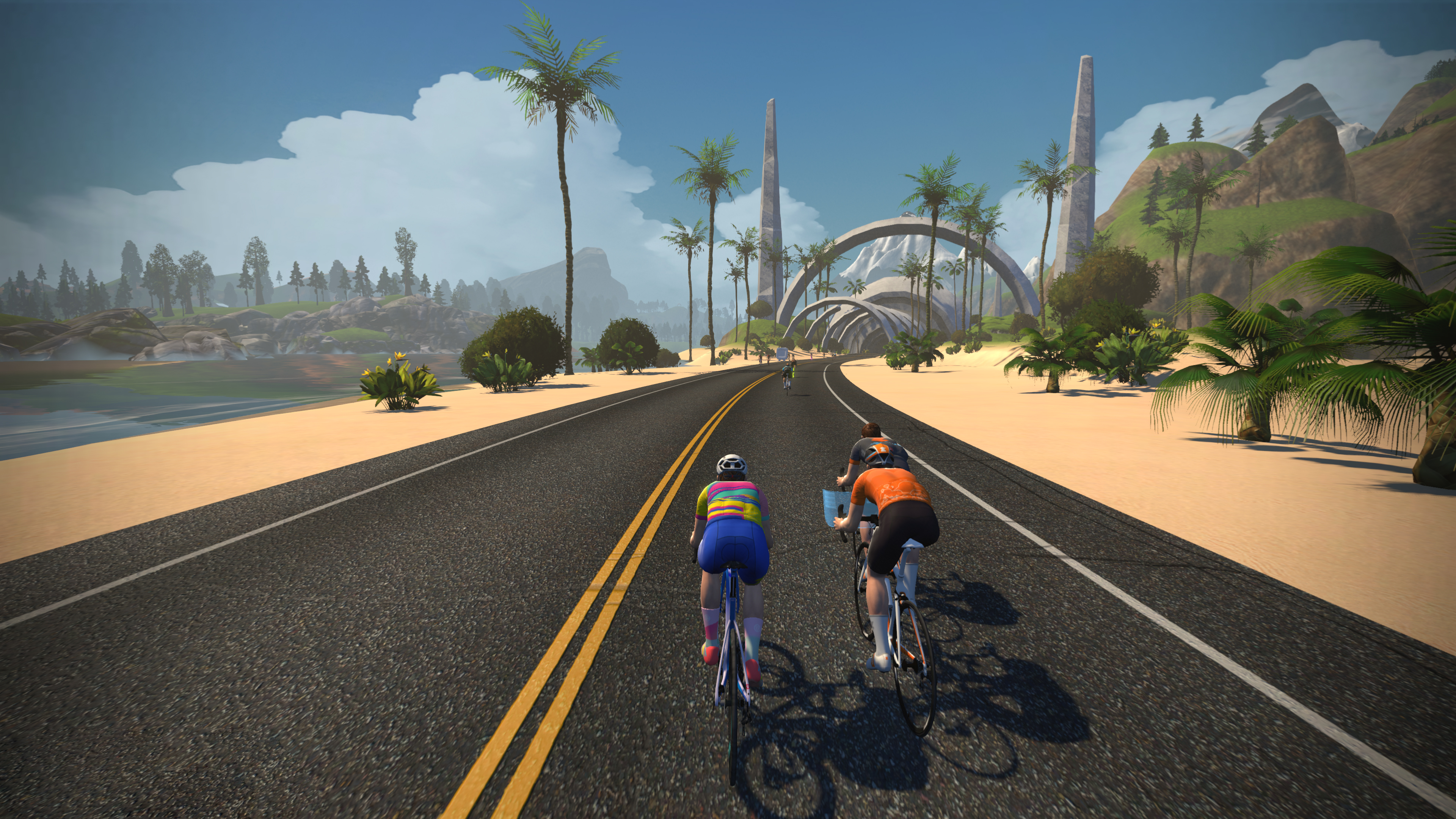
How to make your indoor rides feel like outdoor rides
Outside of accomplishment and exploration as motivation, there are also some nuts and bolts types of outside riding practices you'll need to think about. Often when people ride inside, they don't eat, drink or stop. If you think about that a bit, you'll understand why it can feel so hard and why the motivation of intervals can be so powerful. If I asked you to go ride outside with no food, no water, and no break you'd struggle just as much as inside. If you could also stop at any time, it's likely there would be a myth about outdoor riding only being for intervals.
If you want to ride inside without doing intervals, you need to do it like you do outside. You’ll want a good fan, food and water, and to make sure you take breaks. When you find yourself at the top of the Epic KOM, where there's a nice view, take a minute. You'd do it outside, so do it inside. Step off your bike, have a bite to eat, and enjoy the view for a moment. When you get back on the bike, enjoy the descent. If you aren't doing intervals, or racing, there's no reason you need to push max power as you descend. Enjoy.
This is particularly important as you extend your indoor rides. While there are tons of routes on Zwift, there are only going to be so many around the distance you prefer to ride. If you want to finish them all you will find yourself riding for long distances. The PRL full is 173.4 km / 107.8 mi and if you want to finish it you are going to need to treat it the same way you would an outdoor ride. Take breaks when you need to and make sure you eat and drink.
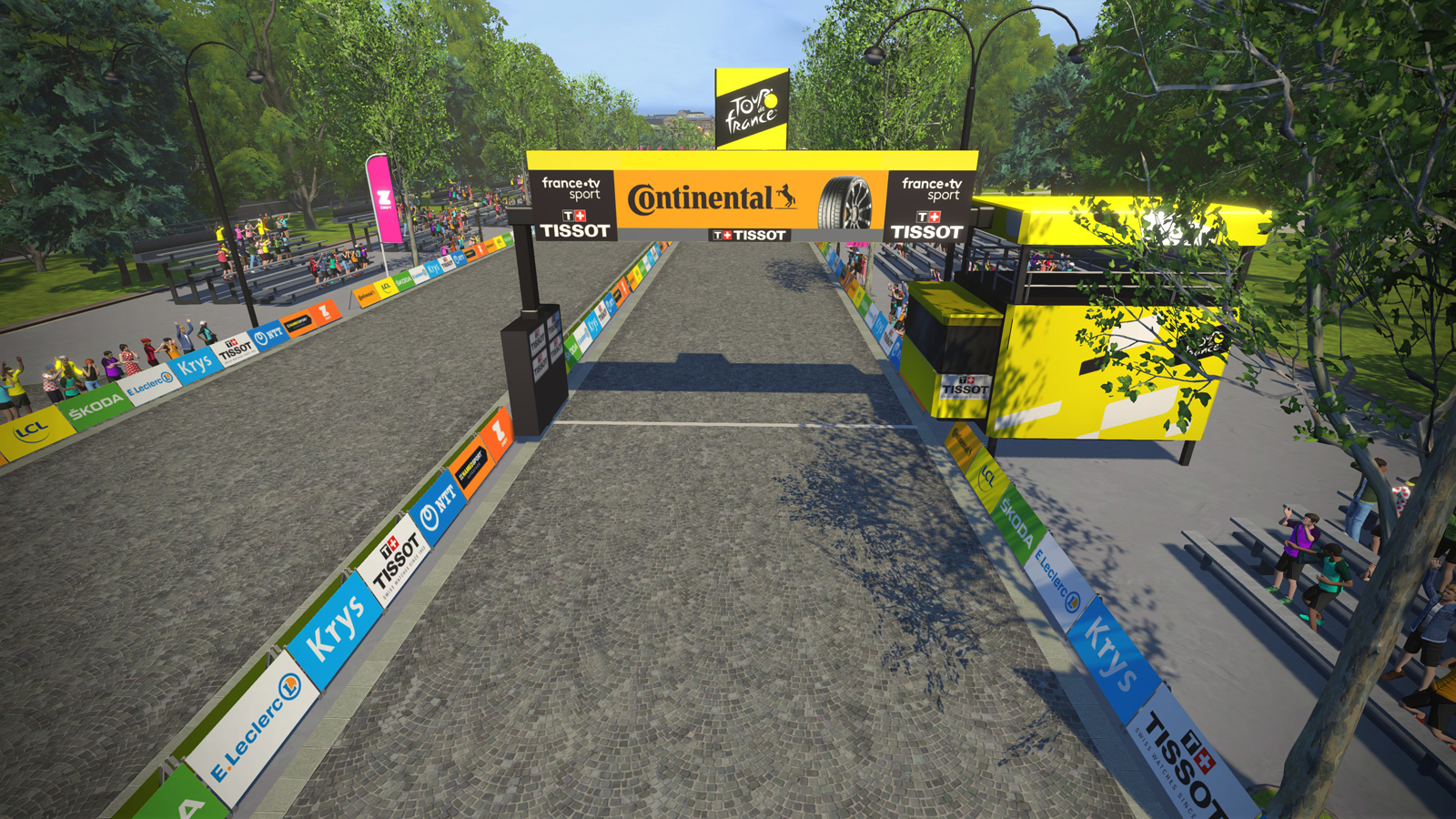
Intervals are popular but there are options
The myth that indoor riding is only for intervals exists for a reason. It started because the technology required for intervals is much simpler. Initially that was your only option if you wanted to ride indoors. When Zwift came onto the market there was a way to simulate outdoor cycling but the myth persisted.
The myth of indoor riding being only for intervals persisted because it can be difficult to find the motivation to ride indoors. Intervals are not only technologically easy to implement, they are an easy way to provide motivation when indoors. If you want to ride indoors without doing intervals, there are plenty of opportunities but you need to replicate the motivation also.
Riding on Zwift can be social, it can be beautiful, and it can be motivating. With a few small changes to how you approach your riding there's absolutely no need to ever think about doing intervals, unless you want to. If you do find the competitive bug, or you find yourself looking towards new adventures in the future, Zwift also offers intervals. There are plans and workouts to help make you faster and let you ride further that are there if you want them. It's only a myth that you need them though.
The latest race content, interviews, features, reviews and expert buying guides, direct to your inbox!
Josh hails from the Pacific Northwest of the United States but would prefer riding through the desert than the rain. He will happily talk for hours about the minutiae of cycling tech but also has an understanding that most people just want things to work. He is a road cyclist at heart and doesn't care much if those roads are paved, dirt, or digital. Although he rarely races, if you ask him to ride from sunrise to sunset the answer will be yes.
Height: 5'9"
Weight: 140 lb.
Rides: Salsa Warbird, Cannondale CAAD9, Enve Melee, Look 795 Blade RS, Priority Continuum Onyx

